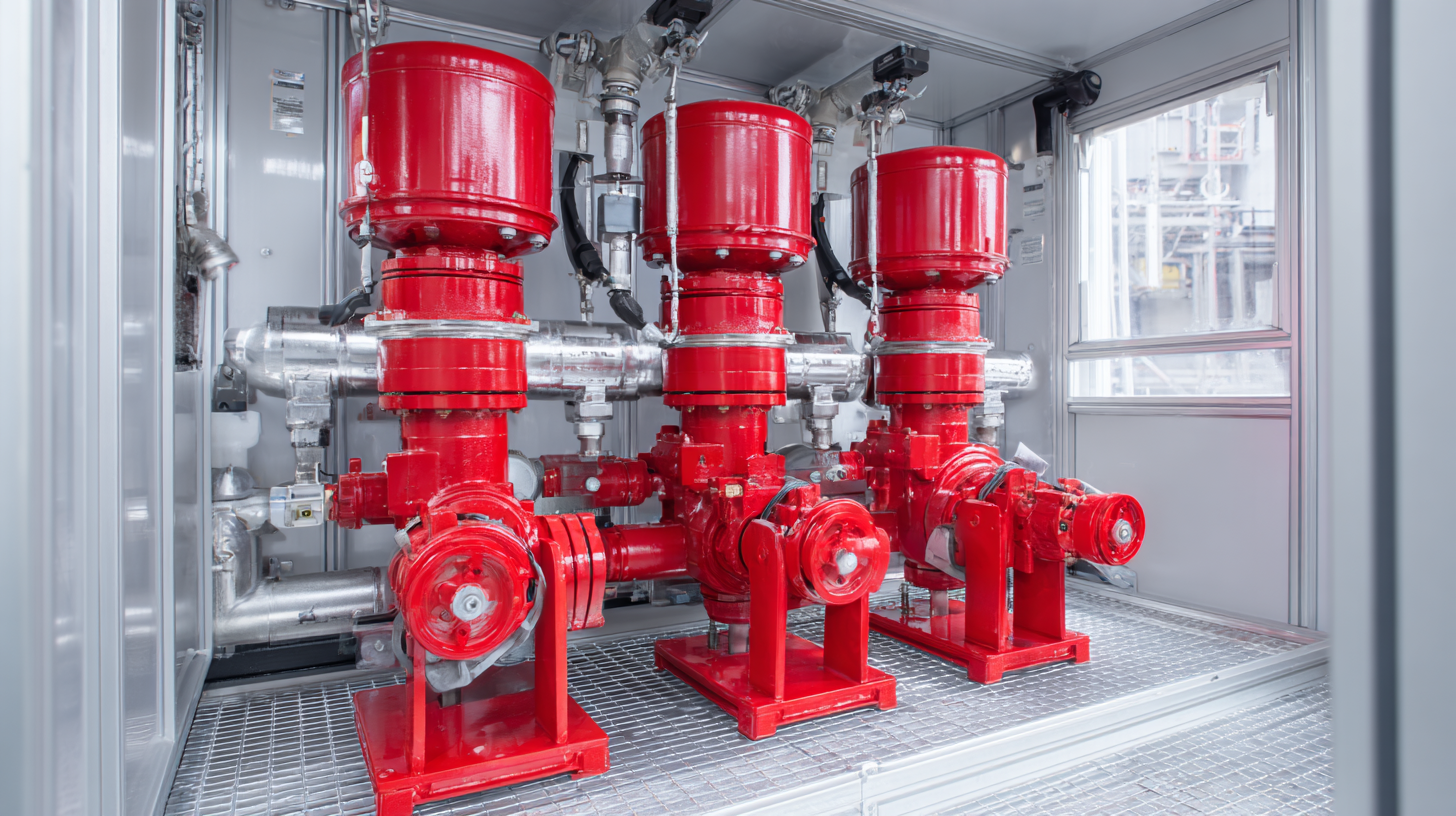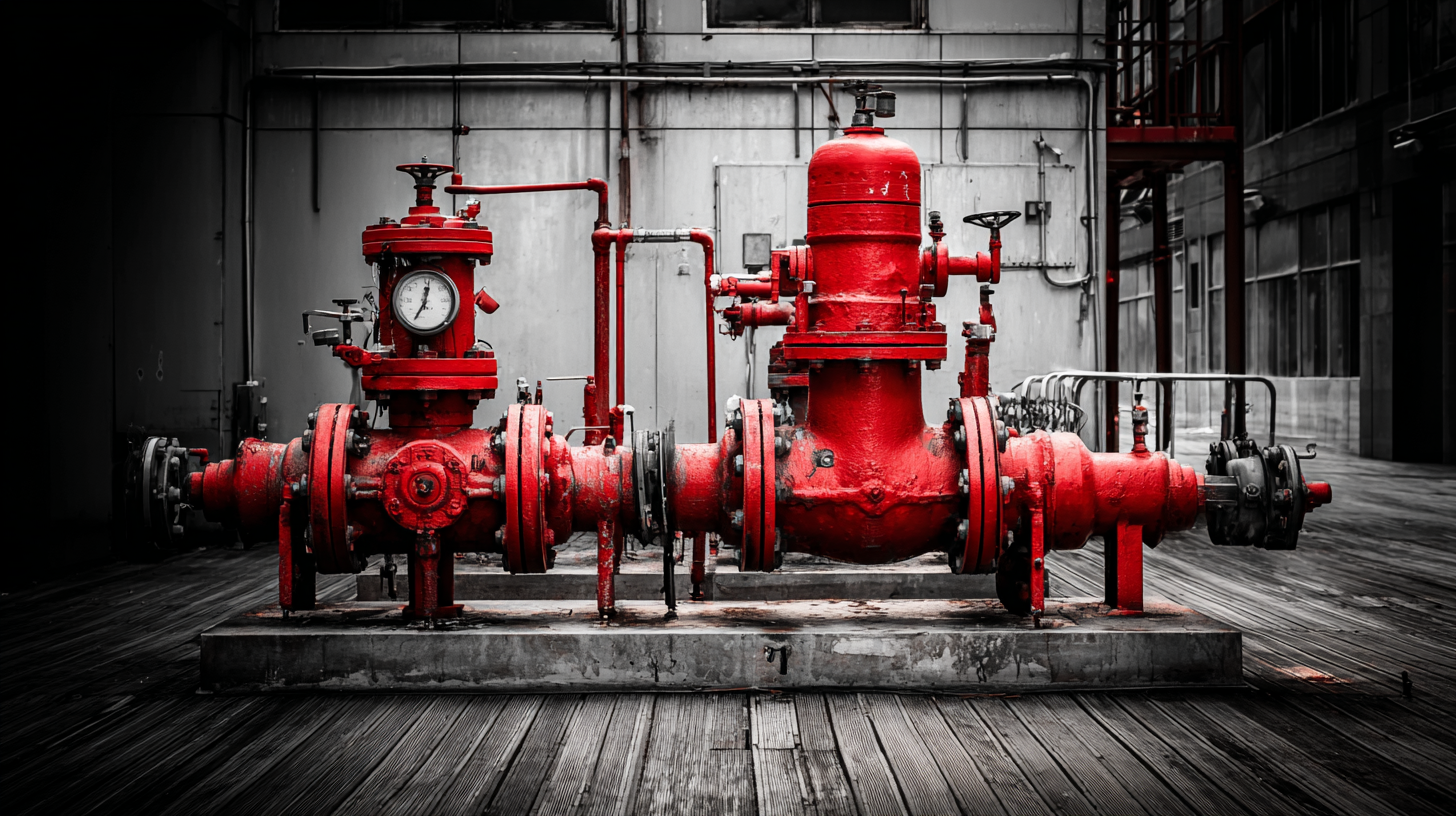
Essential Criteria for Choosing the Best Fire Pump for Your Needs
In recent years, the importance of selecting the right Fire Pump has become increasingly critical due to the growing number of fire incidents and the enhancement of safety regulations. According to the National Fire Protection Association (NFPA), there were over 1.3 million fire incidents reported in the United States alone in 2021, resulting in billions of dollars in damages. As fire safety becomes a paramount concern for both commercial and residential properties, the demand for efficient and reliable fire pumps is at an all-time high.

The global fire pump market is projected to grow at a compound annual growth rate (CAGR) of over 5% from 2021 to 2026, highlighting a significant need for expertise in selecting the appropriate fire pump to meet specific safety standards and operational requirements. Understanding the essential criteria for choosing the best fire pump is not only important for compliance but also for ensuring the protection of lives and property in the event of a fire emergency.
Key Features to Consider When Selecting a Fire Pump Type
When selecting a fire pump, it’s crucial to consider the specific key features that align with your needs. First and foremost, the pump's flow rate and pressure capacity are essential. These parameters determine how effectively the pump can deliver water to the fire. Understanding the size of the area that requires coverage will help you choose a pump with sufficient flow rates, typically measured in gallons per minute (GPM), and the correct pressure, often expressed in pounds per square inch (PSI).
In addition to flow and pressure, durability and maintenance needs are vital. Fire pumps need to withstand harsh conditions and operate reliably in emergencies. Look for materials that resist corrosion and wear, ensuring longevity and effectiveness over time. Furthermore, consider the ease of maintenance—pumps that allow for simple inspections and part replacements can save valuable time when it matters most. Lastly, evaluating the power source, whether it’s electric, diesel, or gas, will significantly impact both operational convenience and overall performance.

Understanding Different Fire Pump Applications and Their Benefits
When it comes to fire safety, selecting the right fire pump is crucial for effectively managing different fire scenarios. Fire pumps come in various types, each tailored for specific applications. For instance, a portable fire pump is ideal for remote locations, allowing quick deployment in areas without a water supply. These pumps are lightweight and can be operated by a single individual, making them essential for emergency response teams operating in challenging environments.
On the other hand, fixed fire pumps, such as those used in larger commercial buildings, provide a consistent and reliable water supply for fire suppression systems. These pumps can be integrated with fire sprinkler systems, ensuring immediate access to water in case of fire emergencies. Understanding the specific needs of your facility or operation is vital, as the right pump can significantly enhance fire protection measures. Additionally, using the appropriate pump can increase efficiency and minimize response times, ultimately saving lives and property in the event of a fire.

The Importance of Flow Rate and Pressure in Fire Pump Performance
When selecting a fire pump, understanding the importance of flow rate and pressure is crucial for ensuring optimal performance in emergency situations. Flow rate, measured in gallons per minute (GPM), indicates how much water can be delivered to the fire site. It directly affects the pump's effectiveness in controlling flames and protecting property from fire damage. A fire pump with a sufficient flow rate ensures that firefighters can access adequate water supplies, enabling them to combat blazes swiftly and effectively.
Equally important is pressure, measured in pounds per square inch (PSI), which determines the force with which water is delivered. High pressure is essential for reaching elevated areas or extinguishing larger fires, as it allows water to penetrate deeper into flames and reach its intended target. When selecting a fire pump, it is vital to evaluate both flow rate and pressure concurrently, as an imbalance could lead to inefficient firefighting efforts. Firefighters and facility managers must ensure that the selected pump meets the specific requirements of their environment, factoring in the potential challenges they may face during a firefighting scenario.
Essential Criteria for Choosing the Best Fire Pump
This chart illustrates the relationship between flow rate and pressure for fire pumps. Understanding these parameters is crucial for ensuring optimal fire suppression performance.
Evaluating Fire Pump Durability and Maintenance Requirements
When selecting a fire pump, one of the critical factors to consider is its durability and maintenance requirements. Fire pumps are vital for ensuring safety during emergencies, and their ability to perform effectively depends on the materials used and the engineering behind them. According to the National Fire Protection Association (NFPA), regular maintenance can extend the life of a fire pump by up to 20 years, making it essential to choose a model designed for longevity.
Durable fire pumps are typically constructed from high-quality materials like stainless steel or bronze, which resist rust and corrosion. Additionally, look for pumps that feature self-lubricating bearings and easy-access service points, as these can significantly reduce maintenance time and costs. The National Association of Fire Equipment Distributors (NAFED) reports that fire pump systems that are proactively maintained can reduce repair costs by approximately 30% compared to neglected systems.
Tips for ensuring optimal durability include conducting regular inspections and adhering to manufacturer-recommended servicing schedules. It's wise to invest in user-friendly pumps that allow for quick checks on operational components. Another essential tip is to educate your staff on routine maintenance procedures to foster a culture of safety and preparedness. These practices not only enhance the performance of fire pumps but also protect your investment.
Assessing Cost vs. Value: Budgeting for Your Fire Pump Investment
When investing in a fire pump, it’s crucial to assess not only the upfront cost but also the long-term value it delivers. Understanding the distinction between cost and value can help you make informed decisions that align with your budget and safety needs. While an initial lower price might be tempting, it’s essential to factor in the ongoing maintenance costs, efficiency, and reliability of the pump over time. This is akin to the recent discussions on sustainable upgrades in existing buildings, where the long-term benefits often outweigh the initial investments, showcasing the importance of a thorough cost-benefit analysis.
Moreover, as governments like the UK are focusing on sustainable practices and fiscal strategies to save costs while investing in critical infrastructure, similar principles can be applied to selecting a fire pump. By taking note of the latest insights into budgeting and value for money, you can better prepare for potential cost reductions and tax benefits that could enhance your financial planning. This approach not only strengthens your fire protection strategy but also ensures that your investment is sound and sustainable, paralleling broader economic trends that favor long-term planning and resource allocation.
Essential Criteria for Choosing the Best Fire Pump for Your Needs
| Criteria | Description | Cost Range ($) | Value Rating (1-5) |
|---|---|---|---|
| Flow Rate | Measured in gallons per minute (GPM); necessary for adequate firefighting. | 1,500 - 5,000 | 4 |
| Pressure Rating | Measured in pounds per square inch (PSI); vital for reaching higher areas. | 100 - 300 | 5 |
| Power Source | Electric, diesel, or gas powered; affects overall operating cost. | 2,000 - 10,000 | 4 |
| Material | Cast iron, aluminum, or stainless steel; impacts durability and lifespan. | 1,000 - 9,000 | 5 |
| Maintenance Cost | Regular maintenance requirements for optimal performance. | 200 - 1,500/year | 3 |
-

Phone
Phone

0086-13586199782
-

E-mail
-

Whatsapp
-

Wechat
Wechat

-

Top
